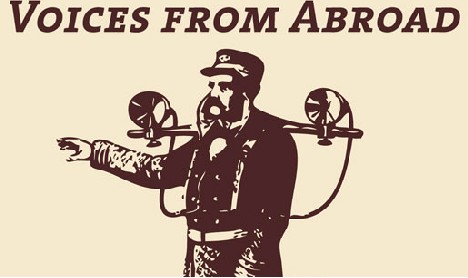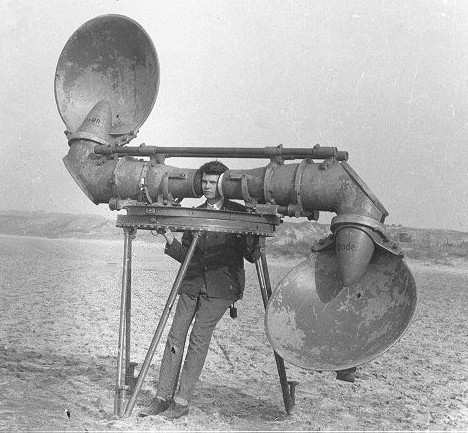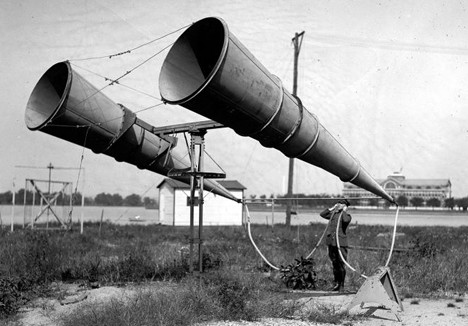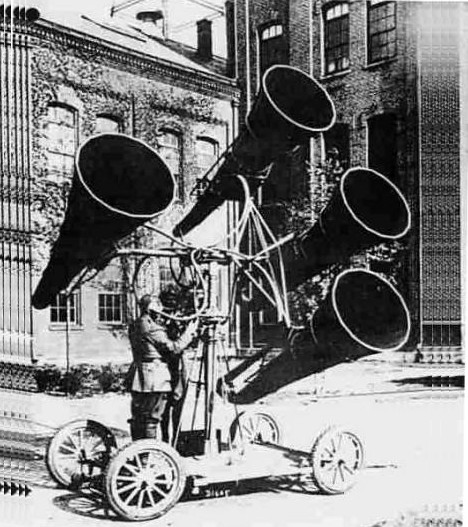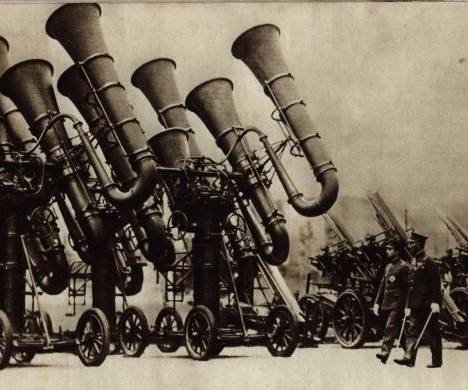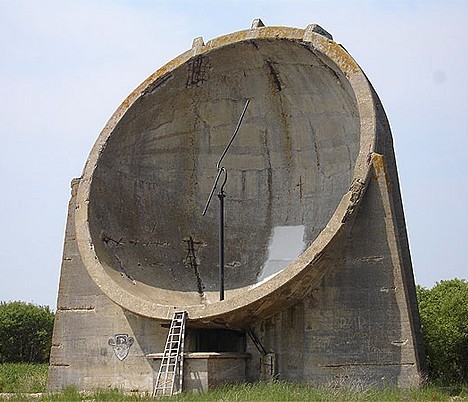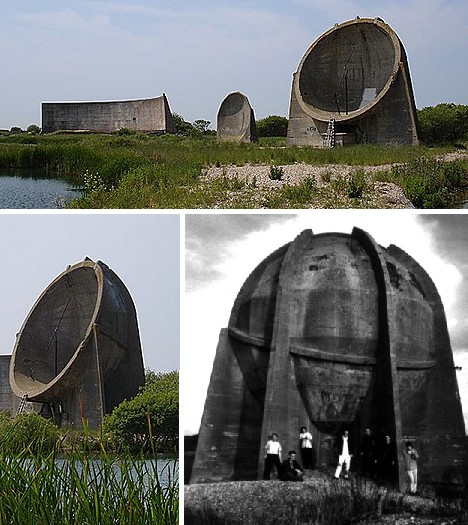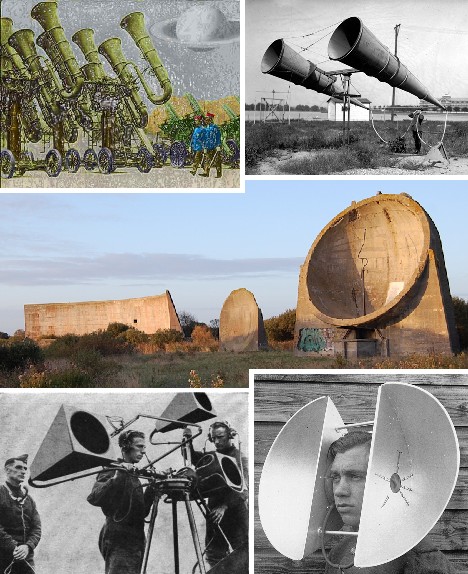
The invention of radar in the 1930s not only saved Great Britain from the German Luftwaffe, it gave the Allies a huge advantage over their enemies in World War II. Imagine where we’d be if radar panned out and its forerunners – Sound Mirrors, Acoustic Horns and War Tubas – were the only means of detecting incoming aircraft?
Early Echlocation
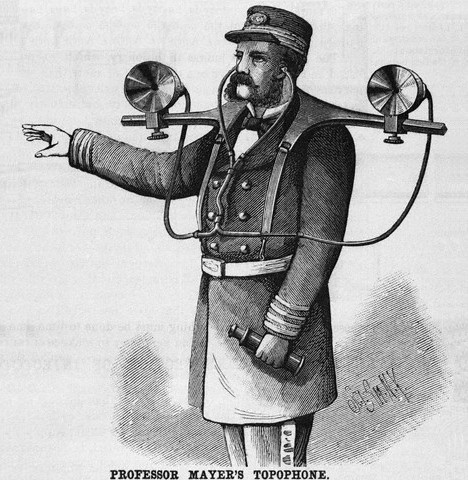 (images via: Ratiu Family Foundation and Michael Leong)
(images via: Ratiu Family Foundation and Michael Leong)
The roots of acoustic location extend back to the late 19th century, even before the invention of aircraft. The earliest rendition of such a device appeared in the pages of Scientific American magazine from 1880. “Professor Mayer’s topophone”, invented and patented by A. M. Mayer in 1879, was intended to assist the wearer in pinpointing the source of any sound. How’s that for Yankee ingenuity!
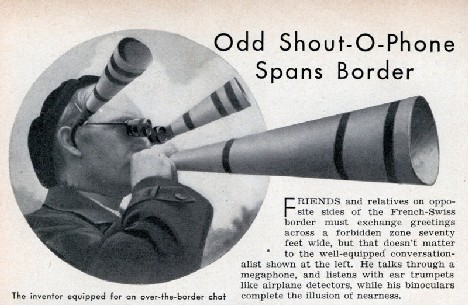 (image via: Modern Mechanix)
(image via: Modern Mechanix)
From the “building a better mousetrap” category comes the Shout-O-Phone, a souped-up version of Professor Mayer’s enhanced ears that boosts the outgoing sound as well. Amazing… not so much the device, but that it took 60 years for it to be produced.
The Ears Have It
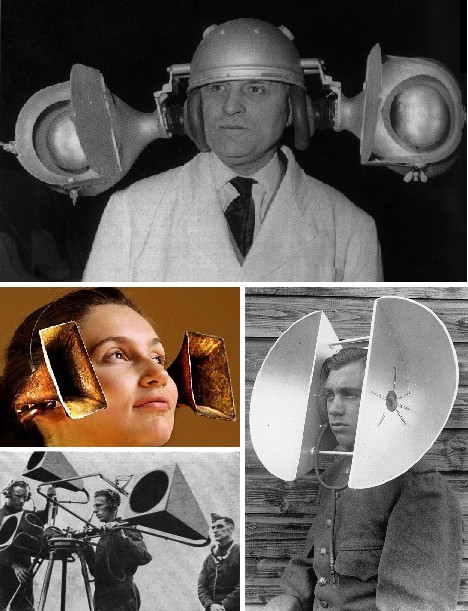 (images via: Amplifier Institute Failures and Dark Roasted Blend)
(images via: Amplifier Institute Failures and Dark Roasted Blend)
Somebody obviously thought there was potential in Professor Mayer’s brainchild (or brain fart, you decide) because personal, wearable sound-enhancing devices made a number of appearances culminating in the 1960 Brussels Inventor’s Fair where French inventor Jean Auscher demonstrated a device that was supposed to help boaters navigate in case of radar failure – which happens like ALL the time.
Czech Mates
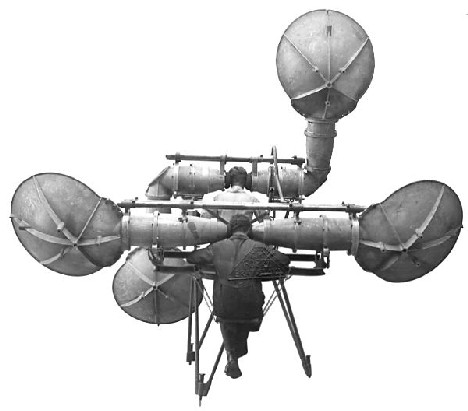 (image via: Amplifier Institute Failures)
(image via: Amplifier Institute Failures)
It was the invention of the airplane and, soon thereafter, the threat of massive bomber attacks in wartime that concentrated military minds. Some way of detecting warplanes at a distance had to be found, and the most obvious method was enhanced acoustic detection. The above devices were built and used by a number of armed forces with a mixed record of success. The above four-horned acoustic locater was built in 1920s Czechoslovakia and tested in The Netherlands… evidently the nearest noisy place.
Horns Of Plenty
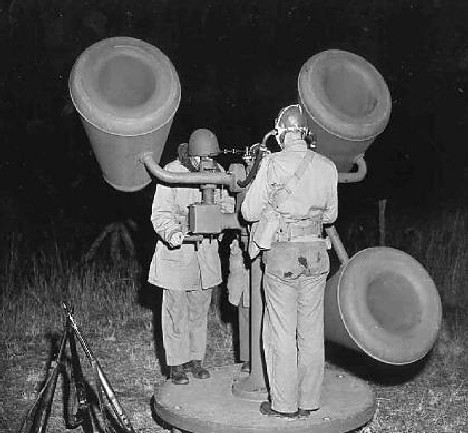 (images via: Amplifier Institute Failures and Architectune)
(images via: Amplifier Institute Failures and Architectune)
Let’s not forget the Americans, carrying on the legacy of Professor Mayer in times of peace and war. The image at above, top, shows a two-horn aircraft detector in use at Bolling Field in Washington DC, in 1921. The lower image depicts a slightly less cumbersome acoustic locator manned by US Army troops in 1943, after radar had been introduced. It should be said that the first Japanese air raids on the American-held island of Corregidor in late December of 1941 were detected by acoustic locators.
Sounds Like War
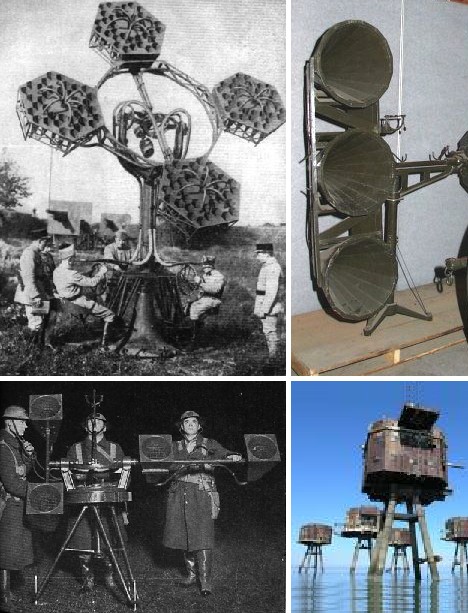 (image via: Amplifier Institute Failures)
(image via: Amplifier Institute Failures)
The 1930s saw rising tensions in Europe and rapid technological progress in aeronautics. Radar was on the horizon but until the newfangled machines were ready, something had to fill the gap.
Do I Hear Spitfires?
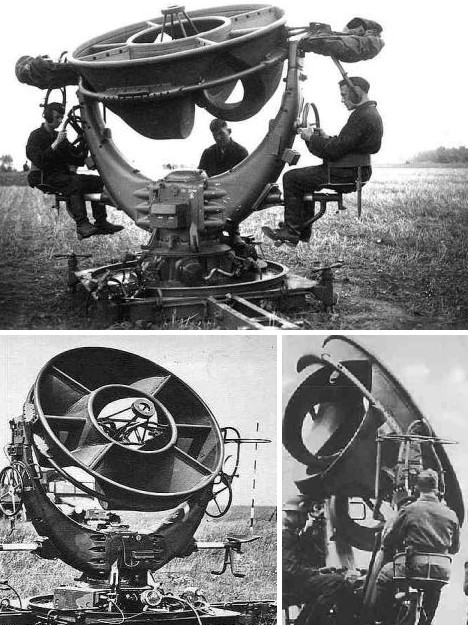 (image via: Damn Interesting)
(image via: Damn Interesting)
As Hitler speedily rebuilt Germany’s war machine in the late 1930s, antiaircraft measures were a high priority. German radar research was far behind developments in Great Britain but that wasn’t the case with acoustic detection, as shown above. Behold, das Ringtrichterrichtungshoerer (or “ring-horn acoustic direction detector”)… RRH for short, used during the Second World war to help aim searchlights at night-flying bombers.
Release The War Tubas!
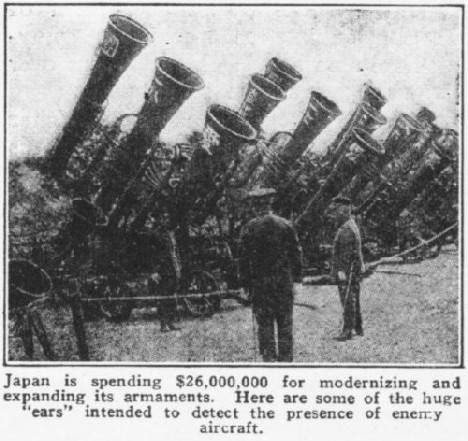 (image via: Amplifier Institute Failures)
(image via: Amplifier Institute Failures)
Let’s not forget Japan, though Japan would probably like to forget these bizarre yet magnificent “war tubas”. These were a variation of the acoustic horn listening devices, not an attempt to blow attacking aircraft out of the sky using low-pressure sound waves. That’s Emperor Hirohito reviewing the Imperial War Tuba Brigade in the top photo by the way, so you know they were serious.
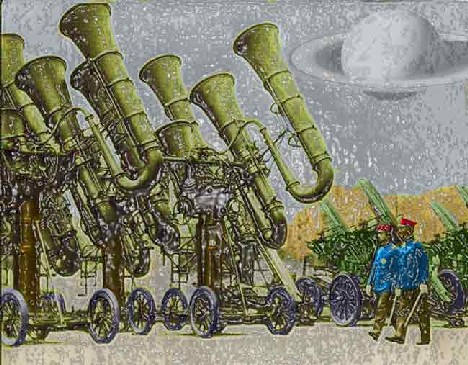 (image via: Fark.com)
(image via: Fark.com)
That incredible War Tubas photo was the subject of a photoshop competition at Fark.com, and the above colorized rendition is one of the more intriguing efforts.
Sound Mirrors, Soul Survivors
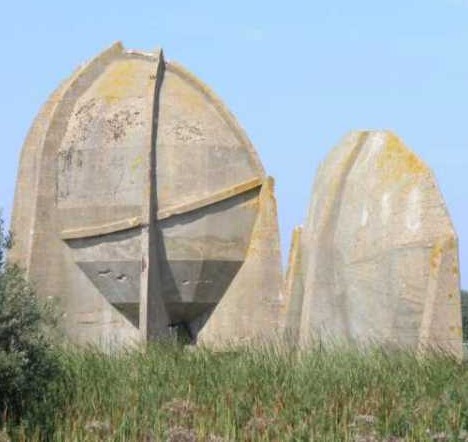 (images via: Everyone Forever, C20 Society and Passing Strangeness)
(images via: Everyone Forever, C20 Society and Passing Strangeness)
The British were well along with large-scale radar installations as the blitzkrieg burst across continental Europe but taking nothing for granted, Churchill’s minions set up a significant number of concrete sound mirrors facing across the English Channel. many of these parabolic shells survive as abandonments today, a testament to a far-off time when wars were low-tech though no less deadly.
